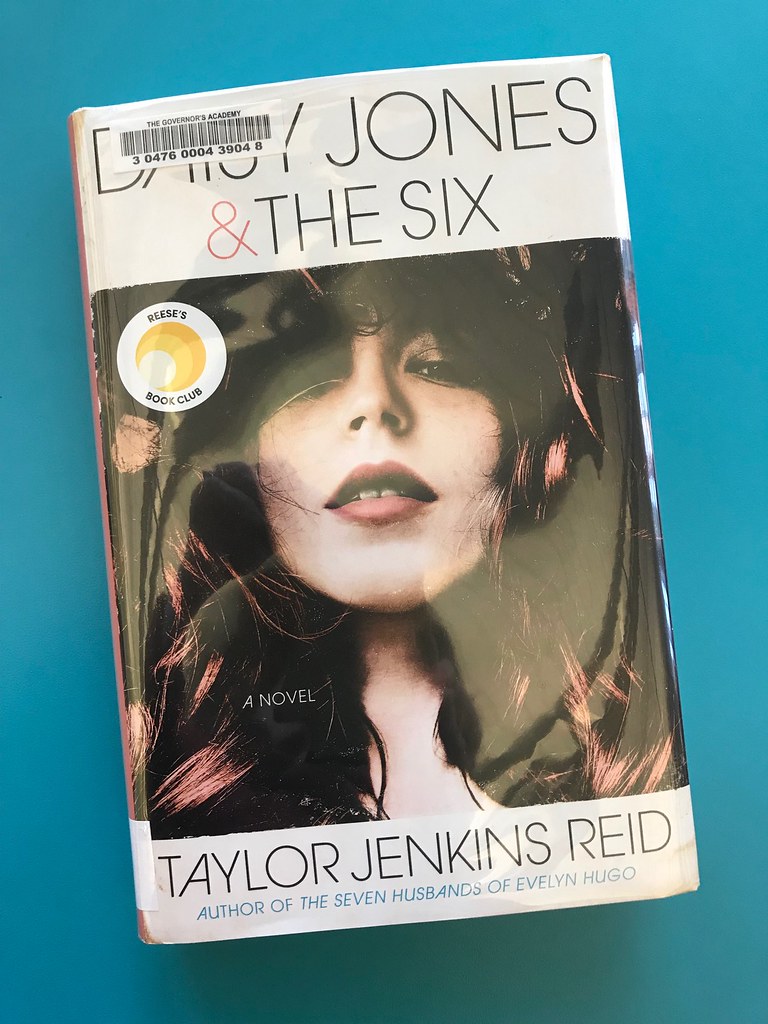In the leap from book to television, Daisy Jones and the Six retains its original format as a series of interviews, now taking the form of a mockumentary. The first three episodes are necessary but slow. However, the show refuses to dwell on series issues that deserve more time. For instance, Billy Dunne’s descent into substance abuse is skimmed over; it takes him less than a single episode to go from a guy who enjoys a beer to a guy in serious need of rehab. The show then treats its audience to a very tame depiction of drug abuse for the Euphoria/Skins generation, and while that doesn’t stop you from being aware of what’s happening, it does undercut the severity of the issue being explored.
Daisy Jones and the Six should be messier, gritter – it’s telling a story set in an incredibly seedy ‘70s music scene, and the band is supposed to be living a rags-to-riches story, toughing it out in LA with barely enough money to get by until they are finally picked up by a record label and achieve fame and fortune, but their house is already huge, their clothes are cool, and their hair is immaculately blown-out. Thank god the writers shoe-horned in some dialogue about the band not having enough money for lunch tomorrow so that we, the audience, know that they’re struggling.
Television loves to use a love triangle as a shorthand for drama, and Daisy Jones and the Six is no exception. In the novel Billy and his bandmate Eddie have a contentious working relationship because they are constantly in an artistic struggle, both desperate to be the voice of authority, each feeling like the other doesn’t properly value their input or respect their opinion. In the show, this nuanced relationship is trampled over and we get treated to a tired trope about jealousy – Eddie is upset that Billy dates and eventually marries a girl for whom he also harbours affection: Camila.
The book explores a similarly complicated dynamic between Daisy, Billy, and Camila. It’s not a straightforward love triangle, as Billy is determined to stay committed to his wife after betraying her trust in the past. Billy and Daisy are also in a situation where they have both struggled or are currently struggling with addiction, and so they explore their attraction to each other mainly through their song-writing instead of confronting it head-on or conducting a full-fledged affair behind Camila’s back. I hope in future episodes the show doesn’t shy away from portraying relationships that are more complicated and nuanced, instead of the surface-level dynamics seen within the first three episodes.
Casting is another issue – are we supposed to believe Sam Claflin is fresh out of high school? How old are these people meant to be? Riley Keough plays a compelling Daisy Jones, but she is not believable as a nineteen year old. Why have half of the band aged in the intermitting twenty years between their break-up and their interview? In the novel, there is a larger time jump between the interviews and the events they described, so the characters reflect on lives that have been much more lived. In the show, Billy, who is in his forties, explains the events that lead to his band’s implosion only two decades ago and leaves the audience to wonder what’s stopping them from getting back together for a reunion tour.
Riley Keough’s Dasiy Jones is far more watchable than Sam Claflin’s performance as Billy Dunne. It’s not so much that Claflin is putting on a bad performance, more so that Billy is often an inaccessible and unlikeable character; he is written to be boorish, overbearing and controlling, which isn’t inaccurate to his characterisation in the book, but it’s infinitely more tedious to watch an actual grown-man act like a sulking toddler on-screen. Keough on the other hand is immediately engaging and likeable as Daisy. It’s easy to see how she charms her friends, her eventual record producer, and her string of opportunistic boyfriends. Because of this, it is clear why Daisy and the eponymous six come together as a band as early as the third episode, and Keough and Claflin’s characters can start playing off each other. It is at this point that the show really starts. This bodes well – it can only go up from here on out.
When Taylor Jenkins Reids writes that Daisy Jones and the Six are “the best band of the ‘70s”, you accept it as a reader, but when you actually hear the band’s music in the show, it is harder to maintain this suspension of disbelief. The original songs are done no favours by being crammed in between a well-stacked soundtrack – you can’t put ‘Look At Us Now’ next to the likes of T-Rex or Carole King and expect it to hold up. Much in the vein of ‘70s easy listening, Daisy Jones and the Six is easy viewing, perfectly passable television that will hopefully only be improved upon in future episodes.
“New Fiction” by Pesky Library is licensed under CC BY-NC-ND 2.0.

